Laser safety is essential in many sectors including medical, industrial, military, research, and cosmetic applications. Ensuring proper eye protection depends on meeting the right laser safety standards for your region and use case.
This guide focuses on the laser safety standards that govern the design, labeling, and performance of laser safety glasses—starting with those specific to Australia and New Zealand, followed by other key global regulations.
1. Laser Safety Standards in Australia and New Zealand
In Australia and New Zealand, laser safety eyewear must comply with the AS/NZS 1337.4 standard. This regulation ensures eyewear is suitable for use in environments where lasers pose a hazard to vision, particularly in industrial, medical, and cosmetic settings.
AS/NZS 1337.4 – Australian/New Zealand Laser Safety Eyewear Standard
-
Based on European standards EN 207 and EN 208, but tailored for local safety expectations
-
Requires laser glasses to be labeled with clear protection markings, including wavelength ranges and protection levels
-
Mandates testing for resistance to high-intensity laser exposure
-
Ensures compatibility with other PPE and comfort for extended wear
-
Often used alongside IEC 60825 classifications to determine appropriate eyewear
This standard is widely applied in hospitals, clinics, manufacturing facilities, and universities across Australia and New Zealand.
2. Laser Safety Standards in the United States
ANSI Z136.1 – The American Laser Safety Standard
The ANSI Z136.1 standard, developed by the American National Standards Institute, is the primary laser safety guideline in the U.S., and is enforced by OSHA (Occupational Safety and Health Administration).
Key Requirements for ANSI Z136.1-Compliant Glasses:
-
Must specify Optical Density (OD) values for protected wavelengths
-
Should balance laser protection with visible light transmission (VLT)
-
Require impact resistance and ergonomic design
-
Labels must clearly display wavelength range, OD, and certification
OSHA’s Role:
-
Enforces workplace laser safety requirements
-
Employers must provide compliant laser eyewear or risk penalties
3. Laser Safety Standards in Europe
EN 207 & EN 208 – European Laser Eyewear Standards
These standards are developed by the European Committee for Standardization (CEN) and are required for all laser safety glasses sold in the European Union.
EN 207 – Full Laser Protection
-
Requires resistance to continuous wave and pulsed lasers
-
Eyewear must be labeled with LB ratings (e.g. LB4 @ 532 nm)
-
Indicates glasses can withstand direct exposure without damage
EN 208 – Alignment Protection
-
Designed for alignment tasks where limited visibility of the laser is needed
-
Not suitable for full protection during laser operation
CE marking is mandatory for all compliant eyewear.
4. International Standards (IEC and Others)
IEC 60825 – Global Laser Classification and Safety Guidelines
-
Developed by the International Electrotechnical Commission
-
Defines laser classes (1 to 4) and associated safety controls
-
Forms the basis of many national standards including AS/NZS 1337.4
Country-Specific Standards
-
Japan: Uses JIS C 6802, based on IEC and ANSI
-
China: Implements GB standards influenced by both IEC and ANSI
-
Other regions often adopt IEC 60825 as a baseline for compliance
5. How to Choose the Right Laser Safety Glasses
Selecting the correct eyewear depends on matching the glasses to the laser wavelength, power level, and regional safety standard.
✅ Key Points to Check:
-
Standards Compliance:
-
Australia/NZ: AS/NZS 1337.4
-
USA: ANSI Z136.1
-
Europe: EN 207 / EN 208
-
International: IEC 60825
-
-
Clear Labeling:
-
Look for OD ratings or LB ratings based on the standard
-
Labels should specify protected wavelengths
-
-
Protection Level:
-
Ensure the optical density matches the intensity of your laser
-
For alignment use only, ensure glasses comply with EN 208 or local equivalent
-
Conclusion
Whether you're working in Australia, New Zealand, the United States, or Europe, understanding and adhering to the relevant laser safety standards is essential for protecting your eyes and ensuring regulatory compliance.
Always check that your laser safety glasses meet certified standards like AS/NZS 1337.4, ANSI Z136.1, EN 207, or IEC 60825, and choose protection levels that match your specific laser system.
Need help selecting the right eyewear? Contact our team at laserglasses.com.au for expert guidance and certified protection.
